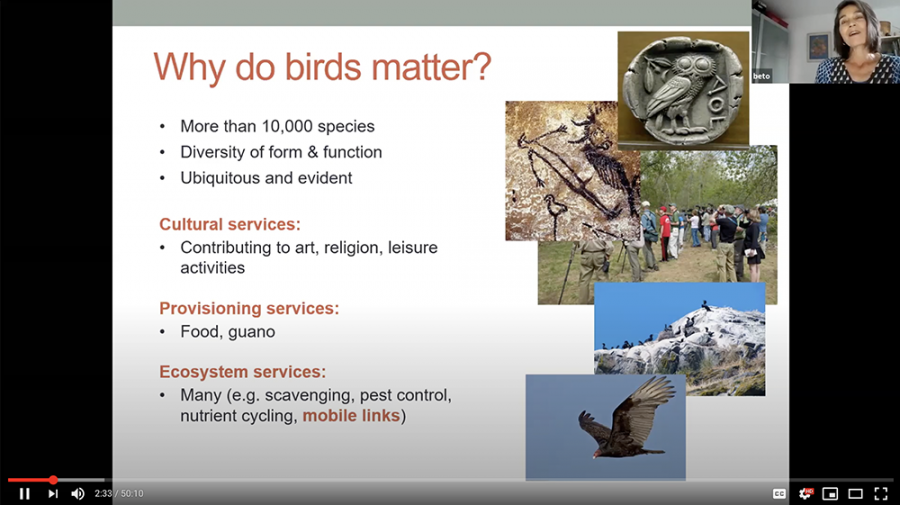
Prof Beth Okamura gave a talk at BOC’s first online meeting on 21 September 2020.
Prof Beth Okamura delivered a presentation at BOC’s first online meeting. Prof Okamura, who is based at the Natural History Museum, London, illustrated the profound effect of waterbird movements on the development and dynamics of freshwater communities and consequent impacts on aquaculture and emerging fish diseases. Her full talk, titled How Birds Shape Freshwater Biodiversity, is now posted on YouTube.
Have you ever wondered how volcanic islands, garden ponds and gravel pits develop a rich biota? Or why rowan trees grow near pines? Patterns of bird visitations form part of the answers. Darwin appreciated that such bird activities might help to explain the widespread distributions of taxa that live in disjunct habitats. This conundrum famously led him to examine the attachment and survival of recently hatched snails on ducks’ feet.

Prof Beth Okamura began her presenation on How Birds Shape Freshwater Biodiversity by talking about why birds matter.
Prof Okamura’s considered how our understanding of dispersal of freshwater invertebrates has improved since Darwin’s time. She focused particularly on evidence for waterbird-mediated dispersal of freshwater animals that are poorly known but that have substantial ecological and practical impacts – bryozoans (or ‘moss animals’) and their myxozoan parasites (or ‘slime animals’). She showed how these animals serve as ‘model systems’ that demonstrate the profound effect of waterbird movements on the development and dynamics of freshwater communities and consequent impacts on aquaculture and emerging fish diseases.
Visit BOC’s YouTube Channel for more presentations given at BOC regular meetings, beginning with Dr Nigel Collar’s talk on 14 November 2017.
